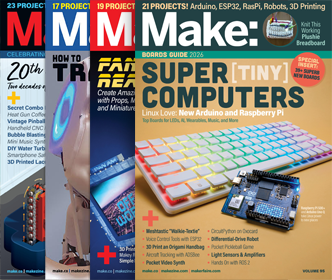Complete instructions for this Weekend Projects can be found at
http://makeprojects.com/Project/BEAM-Solar-Chariots/1939/1
BEAM is a type of robot design that allows you to create little robot/robot-like critters and vehicles mainly using basic analog components (resistors, transistors, capacitors, diodes, LEDs). The challenge is to try and get as much robot-like behavior using these components. BEAM is an acronym for “Biology, Electronics, Aesthetics, Mechanics” and these four elements serve as inspiration in all BEAM design.
For these two projects, we’ll use what’s known as a “solar engine” (Type 1 “FLED” variety), some store bought and scavenged electronics, and laser-cut and gold-leafed wheels to build some stylin’ little Solar Chariots. Let the build begin!









